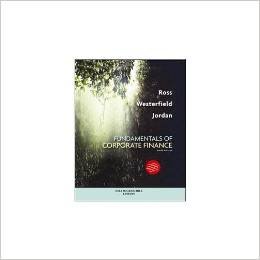
Concept explainers
Case summary:
Person M and Person T are the owners of Company S. They have planned to expand their business. Hence, they asked Person C, the financial analyst to identify an underwriter who would help the company to raise $35,000,000 through a 10-year bond issue. Person C decided that Company R would be the underwriter of the issue. Person C met Person R from Company R and discussed about the bond issue and the features of the bond.
Although Person C was aware of the bond features, he or she was not aware of the effect of those features on the coupon rate and the cost and benefits of those features. Hence, Person R asked his or her assistant, Person X to prepare a memo regarding the effect of bond features on the coupon rate and the cost and benefits of those features.
Characters in the case:
- Company S: The firm issuing bonds
- Person M: Co-owner of Company S
- Person T: Co-owner of Company S
- Person C: Financial analyst of Company S
- Company R: The underwriter
- Person R: The employee of Company R
- Person X: Person R’s assistant
To determine: The effect of negative covenants on the coupon rate, and its advantages and disadvantages
Want to see the full answer?
Check out a sample textbook solution
Chapter 7 Solutions
Fundamentals Of Corporate Finance, Tenth Standard Edition
- Ends Mar 30 Discuss in detail what is Free Cash Flows and how is it calculated. Also define what is a Sunk Cost as well as an Opportunity Cost. 0arrow_forwardSubscribe Explain in detail what is a firm's Capital Structure? What is and how does a firm's Financial Policy impact its Capital Structure? Finally, what is opportunity costs and how does it affect a firm's Capital Structure?arrow_forwardWhat is the answer of this finance wuarrow_forward
 Intermediate Accounting: Reporting And AnalysisAccountingISBN:9781337788281Author:James M. Wahlen, Jefferson P. Jones, Donald PagachPublisher:Cengage Learning
Intermediate Accounting: Reporting And AnalysisAccountingISBN:9781337788281Author:James M. Wahlen, Jefferson P. Jones, Donald PagachPublisher:Cengage Learning Cornerstones of Financial AccountingAccountingISBN:9781337690881Author:Jay Rich, Jeff JonesPublisher:Cengage Learning
Cornerstones of Financial AccountingAccountingISBN:9781337690881Author:Jay Rich, Jeff JonesPublisher:Cengage Learning


